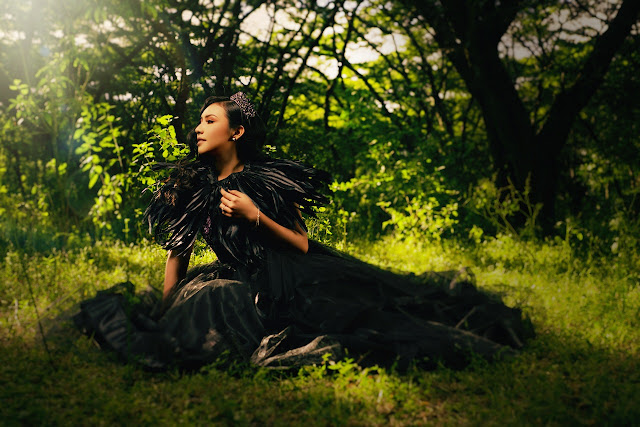WHAT IS SATIN FABRIC? A GUIDE TO THE TYPES, CHARACTERISTICS, AND USES FOR SATIN IN EVENING DRESSES
Satin, with
its smooth, lustrous surface and luxurious feel, has been a favourite choice
for evening dresses for centuries. This elegant fabric has a timeless appeal
that exudes sophistication and glamour. In this comprehensive guide, we will
explore the world of satin, discussing its various types, distinctive
characteristics, and the diverse applications it finds in crafting exquisite
evening dresses.
The Origins
of Satin
Satin has a
rich history that dates back to ancient China, where it was initially woven
from silk fibres. The name "satin" is believed to have originated
from the Chinese port city of Quanzhou, known as "Zayton" in Arabic,
where the fabric was first exported to Europe. Over time, satin gained
popularity across cultures and continents.
Types of
Satin
Satin is
available in various types, each with its unique characteristics and uses in
fashion. Here are some of the most common types of satin:
Silk Satin:
Silk satin is the epitome of luxury. It is made from pure silk fibres, giving
it a natural sheen, softness, and a delicate drape. Silk satin evening dresses
are known for their opulence and elegance.
Polyester
Satin: Polyester satin is an affordable alternative to silk satin. It offers a
smooth, glossy finish and is often used for evening dresses when budget
considerations are a factor.
Acetate
Satin: Acetate satin is another synthetic option that closely resembles silk
satin. It has a shiny surface and drapes well, making it a popular choice for
eveningwear.
Satin
Charmeuse: Charmeuse is a lightweight, drapey satin with a glossy front and a
matte back. It is often used for creating sleek, form-fitting evening dresses
that flow gracefully with movement.
Duchess
Satin: Duchess satin is a heavyweight satin with a high-gloss finish. Its
stiffness and structure make it ideal for creating structured, voluminous
silhouettes in evening gowns.
Characteristics
of Satin
Satin
possesses distinct characteristics that make it a favoured fabric for evening
dresses:
Smooth
Surface: Satin's hallmark is its smooth and shiny surface, which reflects light
beautifully. This feature gives evening dresses a luxurious, elegant
appearance.
Softness:
Satin is known for its soft and silky texture, which feels gentle against the
skin. It enhances comfort, especially for long evening events.
Drapability:
Satin has excellent drapability, allowing it to flow gracefully and create
flattering silhouettes. It hugs the body's curves and moves elegantly with the
wearer.
Sheen:
Satin's natural sheen adds a touch of glamour to evening dresses, making them
stand out in any setting, from cocktail parties to formal galas.
Colour
Intensity: Satin's smooth surface reflects colour vibrantly, resulting in rich,
saturated hues. This quality makes it a popular choice for creating dresses in
bold and striking colours.
Versatility:
Satin's versatility allows it to be used for various dress styles, from classic
A-line gowns to contemporary, avant-garde designs.
Uses of
Satin in Evening Dresses
Satin is a
versatile fabric that offers numerous possibilities for creating stunning
evening dresses. Its luxurious qualities make it a favorite choice among
designers for various purposes:
Timeless
Elegance: Satin has an enduring appeal that suits classic, formal evening
dresses. Its smooth surface and natural sheen elevate traditional silhouettes,
such as ball gowns and mermaid dresses, to create a sense of timeless elegance.
Contemporary
Chic: Satin has adapted to modern fashion trends and is frequently used in
sleek, contemporary evening dress designs. Minimalist, figure-hugging dresses
in bold colours or with unique cuts showcase the fabric's versatility and
ability to create a modern, chic look.
Bridal
Attire: Satin has a prominent presence in the world of bridal fashion. It is
commonly chosen for wedding dresses, particularly those with structured
bodices, full skirts, or vintage-inspired designs. The fabric's sheen adds an
extra layer of luxury to bridal gowns.
Red Carpet
Glamour: Satin is a popular choice for red carpet events, where celebrities and
fashion-forward individuals opt for elegant, eye-catching gowns. Its ability to
create a flattering silhouette and reflect light makes it a go-to choice for
glamorous occasions.
Accessories
and Detailing: Satin is not limited to full dresses. Designers often use it for
accessories like sashes, bows, and ribbons to add a touch of luxury to
eveningwear. It can also be used for bodice detailing, creating a beautiful
contrast with other fabrics.
Mixing
Textures: Satin pairs well with other fabrics, such as lace, chiffon, and
tulle, allowing designers to create intricate and multi-textured evening
dresses. The contrast in textures adds depth and visual interest to the overall
design.
Conclusion
Satin, with
its illustrious history, luxurious feel, and versatility, continues to be a
beloved fabric for creating breathtaking evening dresses. Whether you seek timeless elegance,
contemporary chic, or a touch of red carpet glamour, satin has a type and style
that can fulfill your vision. As you explore the world of evening dresses,
consider the type of satin that aligns with your style and the occasion, and
prepare to embrace the sensuous, regal allure that only satin can provide.
In the realm
of fashion, the right satin evening dress can make you feel like a star,
radiating confidence and sophistication as you step into the spotlight of any
special event.




Comments
Post a Comment